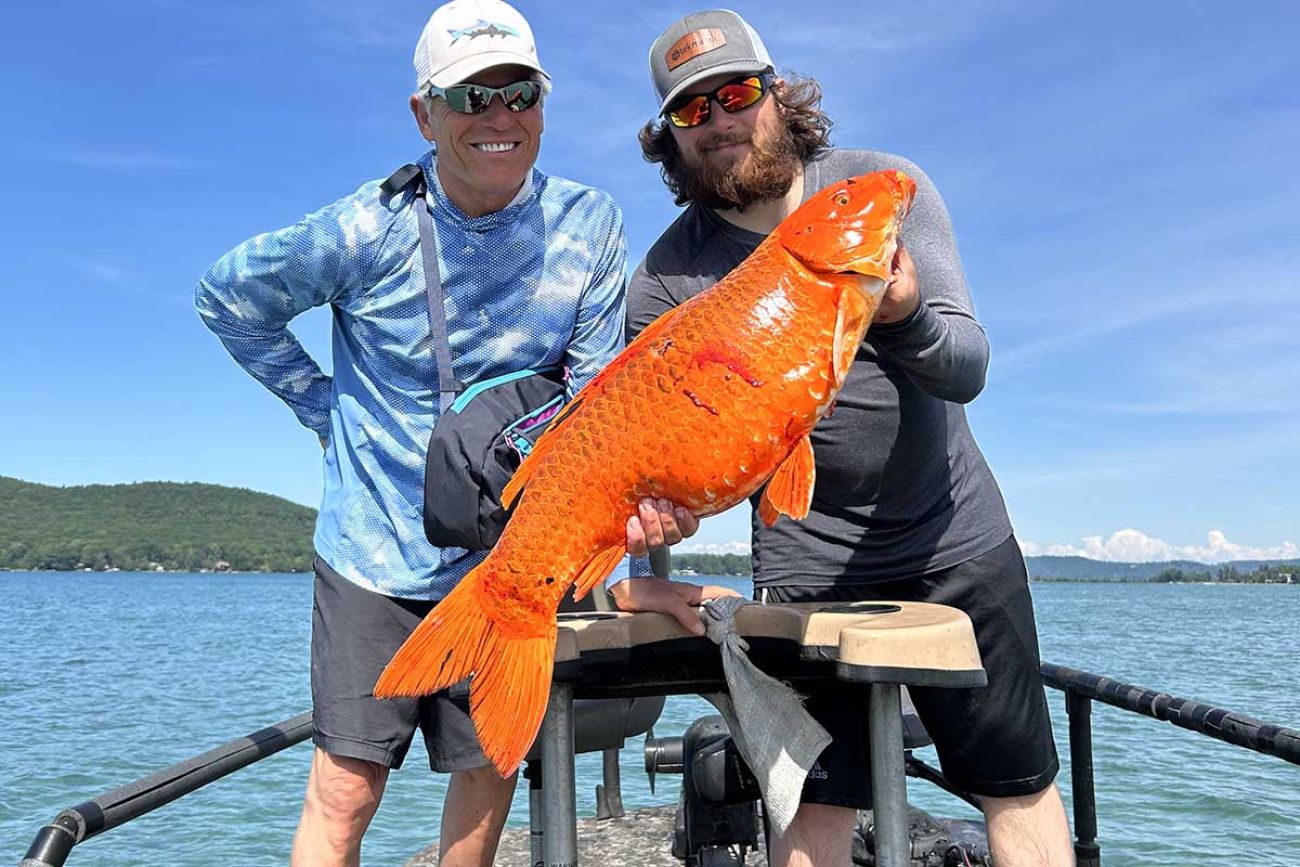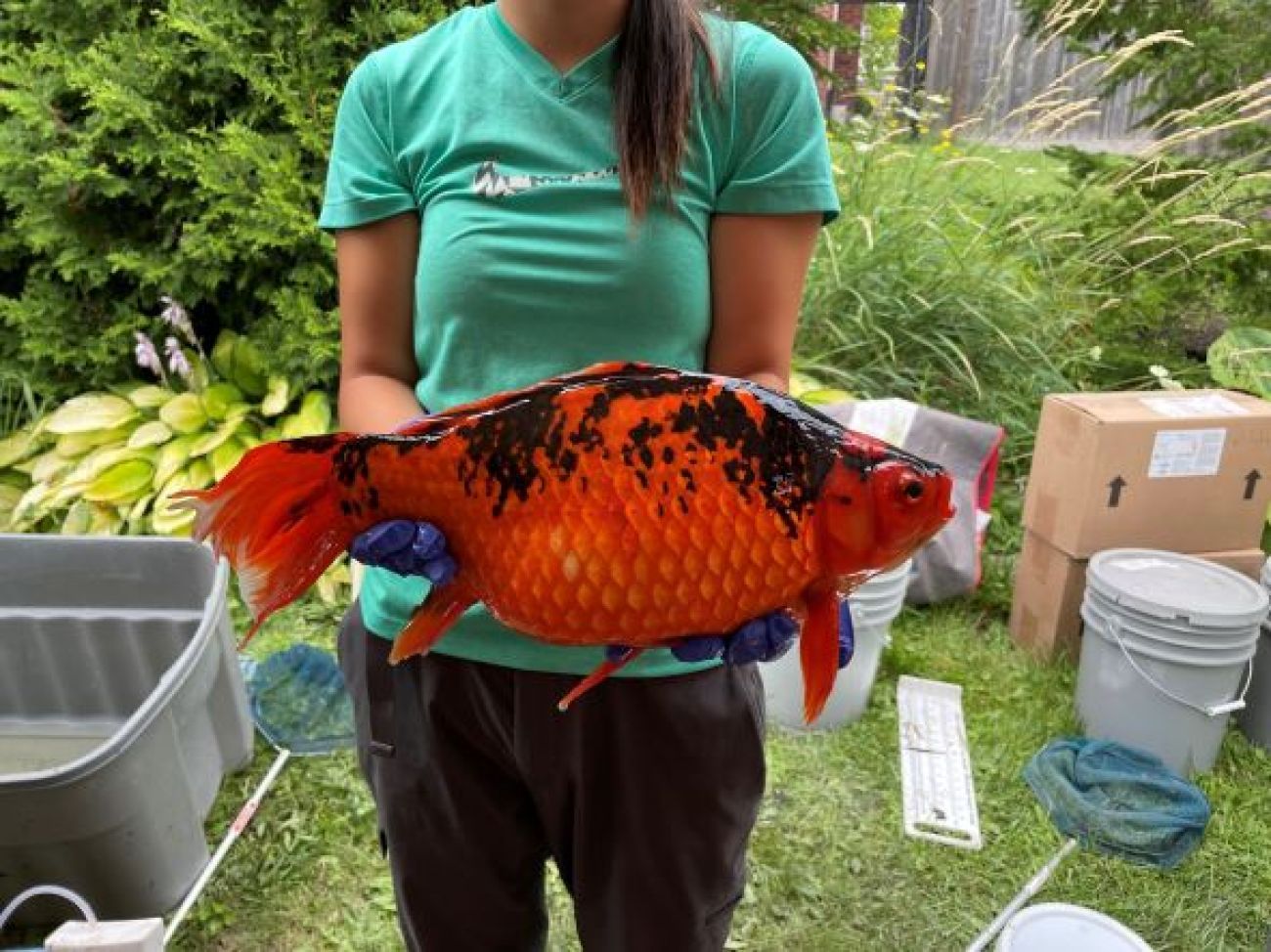
By Gabrielle Nelson
The Great Lakes News Collaborative includes Bridge Michigan; Circle of Blue; Great Lakes Now at Detroit Public Television; Michigan Public, Michigan’s NPR News Leader; and who work together to bring audiences news and information about the impact of climate change, pollution, and aging infrastructure on the Great Lakes and drinking water. This independent journalism is supported by the Charles Stewart Mott Foundation. Find all the work HERE.
- Invasive ‘Japanese koi monsters’ found their way into Glen Lake, likely released into the wild by people who kept them as pets
- Glen Lake preservation scientists recruited bowfishers to catch and remove the koi before they caused serious damage to the native animals and plants
- If you want to relocate unwanted, non-native pets or plants, contact your local aquarium or pet store but never release them into lakes, rivers, storm drains or ponds
Robert Karner and the Glen Lake Association are on a mission to preserve the crystal-clear waters of Glen Lake next to Sleeping Bear Dunes and protect its ecosystem from invasive species.
That includes Eurasian watermilfoil and one that’s gaining attention, Japanese koi.
In May, bowfishers partnered with the association, a preservation and protection organization for the 46 square miles of Glen Lake/Crystal River watershed, caught and removed four invasive koi from Little Glen Lake.
“Not all invasive species are actionable,” or able to be removed once they are introduced to a lake or river, said Karner, biologist at the Glen Lake Association. “But a big fish like Japanese koi, at least that’s something we think is manageable.”
The removal is part of a three-year effort to remove invasive koi from the lake to protect the lake’s native plants and animals.
And these aren’t your typical domestic pond koi, they’re “Japanese koi monsters,” said Karner.
“I was totally dumbfounded,” he said when he saw the size of the koi.
The largest fish weighed 24.5 pounds, breaking the world record for biggest koi caught bowfishing. Three of the four koi, a type of carp, were females with bellies full of eggs, said Karner.
Glen Lake residents first sighted the koi six years ago. But in 2023, when preservation scientists were using drone footage to keep an eye on the spread of another invasive species called Eurasian milfoil, a seaweed-like plant, they spotted bright orange fish in the images.
The native fish of Glen Lake are not bright orange. They knew the fish were the koi that were reported years ago.
The next spring, during the koi spawning season, Karner and his team took the opportunity to remove the koi before they could become a bigger problem.
To catch the fast, intelligent monster fish, they had to take an unconventional approach. The Glen Lake Association and the Michigan DNR teamed up with bowfishers from Thundering Aspens Sportsman Club.
“We had a choice to do nothing or try something we’ve never tried before,” he said. “We think it was pretty successful.”
The bowfishers removed the koi from the lake before they could reproduce and become a greater threat, but Karner said the bowfishers will return in the spring for the next two years to remove two or three more koi that they know are still in the lake.
Pet problem?

In 2023, scientists in Ontario caught and removed more than a dozen feral goldfish, each weighing up to 3 pounds, in Hamilton Harbor on Lake Ontario, which connects to Lake Erie. (Courtesy of Fisheries and Oceans Canada)
Koi, like other invasive carp including feral goldfish, aren’t native to Michigan’s watersheds.
Invasive species have no natural predators and are more resistant to native disease, so they run amok in lakes, ponds and rivers.
The lake bed of Glen Lake is lush with native aquatic plants that are the foundation to a healthy ecosystem, providing food and shelter for native animals.
But invasive carp tear through these aquatic gardens, damaging the plants and stirring up muck that dirties Glen Lake’s famous clear water.
“These organisms aren’t supposed to be here,” said Kyla Foley, aquatic invasive species coordinator at the Benzie Conservation District. “Once an invasive species is introduced, it becomes very hard and generally very expensive to manage.”
So prevention is key, she said.
Karner, who’s been tracking the koi in Glen Lake for six years, said likely, the fish were pets whose owners released them into the lake.
“They didn’t want to kill them. They didn’t know where to put them, so they let them free,” he said. “That’s the hypothesis.”
A seemingly innocent pet koi, turtle or crayfish can cause major damage to Michigan’s native ecosystems, said Foley.
“If you have pets or aquarium plants and you bought them from a store, it’s always important to make sure that when you’re done with them, you find the appropriate home for them,” she said. “They shouldn’t be released out into the wild.”
To learn how to properly find a new home for unwanted non-native plants or animals, Michigan State University’s Reduce Invasive Pet and Plant Escapes, or RIPPLE, program offers resources and information on its website.
Catch more news at Great Lakes Now:
To tackle climate change, Michigan enlists a ‘corps’ of volunteers
Green infrastructure job trainings aim to support growing field
Featured image: A world-record koi weighing 24.5 pounds along with three other “monster” koi were removed from Glen Lake where they are an invasive species. (Courtesy of Robert Karner)




